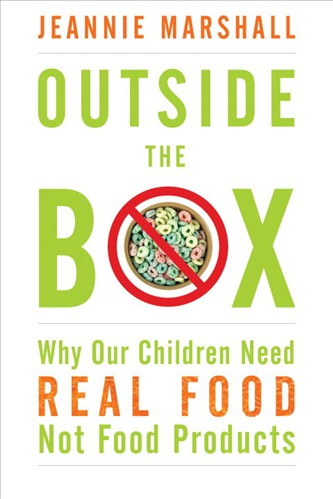 I just finished reading this fascinating book by Jeannie Marshall, a Canadian now living in Rome with her husband and son Nico. Marshall’s book tells the story of her family’s love affair with Italian food-which is under threat from food marketing, fast food, junk food, and processed foods of all sorts, which are marketed with ever-increasing intensity at Italian children. Sound familiar?
I just finished reading this fascinating book by Jeannie Marshall, a Canadian now living in Rome with her husband and son Nico. Marshall’s book tells the story of her family’s love affair with Italian food-which is under threat from food marketing, fast food, junk food, and processed foods of all sorts, which are marketed with ever-increasing intensity at Italian children. Sound familiar?
Marshall points to an alarming trend: traditional food culture is alive and well, it seems, amongst Italian adults, but Italian children are apparently starting to eat more like stereotypical North Americans. Marshall talks about the junk food offered at birthday parties, and the apparent innocence (‘it’s just a harmless little treat’) with which Italians offer processed foods of all kinds to their children. And she notes some of the consequences, including an alarming rise in child obesity rates: Italy is not far behind the US, and at current trends is catching up rather quickly! Her anecdotes about her teaching Nico about traditional food culture reveal the tensions and fault lines in contemporary Italian eating habits (which are very similar to those in France).
Marshall’s book contains lovely anecdotes about some of the food traditions that are alive and well in Italy — such as local markets, and the two-course hot lunch served at schools, featuring everything from spicy arugula to nettle salad (yup - nettles!), pumpkin risotto, fish served with tomatoes and capers, and sautéed zucchini flowers. Yum. Sigh. These passages were fascinating for their similarity to school lunches passages remind me of the school lunches served in France (although I have to admit the Italian dishes sound better than that served at the average French cantine!).
The book is a marvellous read because the story is so deceptively simple: one family’s experience of Italian food (with luscious, lingering descriptions of fresh produce and oh-so-satisfying meals). But this is much more than a personal story (fascinating as it is). Marshall also discusses food marketing, nutrition policy, and the food industry-using examples from around the world. Her personal story is thus placed in a broader context; the book is both informative yet accessibly written (not an easy task!).
Marshall’s take home message is summed up in the sub-title of the book: our children need real food, not food products. In fact, Marshall argues that we would do well to be wary of ‘healthy food’ marketing, in which nutritional messages are often used to lure people into buying expensive, yet ultimately less healthy processed foods. Marshall’s argument echoes that made by Marion Nestle (NYU Professor and Atlantic Monthly columnist) in her book Food Politics). Nestle’s endorsement is a wonderful summary:
“Outside the Box is about teaching kids how to appreciate real food but also about how globalization is changing the way the world eats. In this beautifully written book about what needs to be done to preserve food culture in Italy and elsewhere, Marshall makes the political personal as she explains how she is teaching her son to enjoy the pleasures of eating food prepared, cooked and lovingly shared by friends and family.”
Bravo for a great book!
